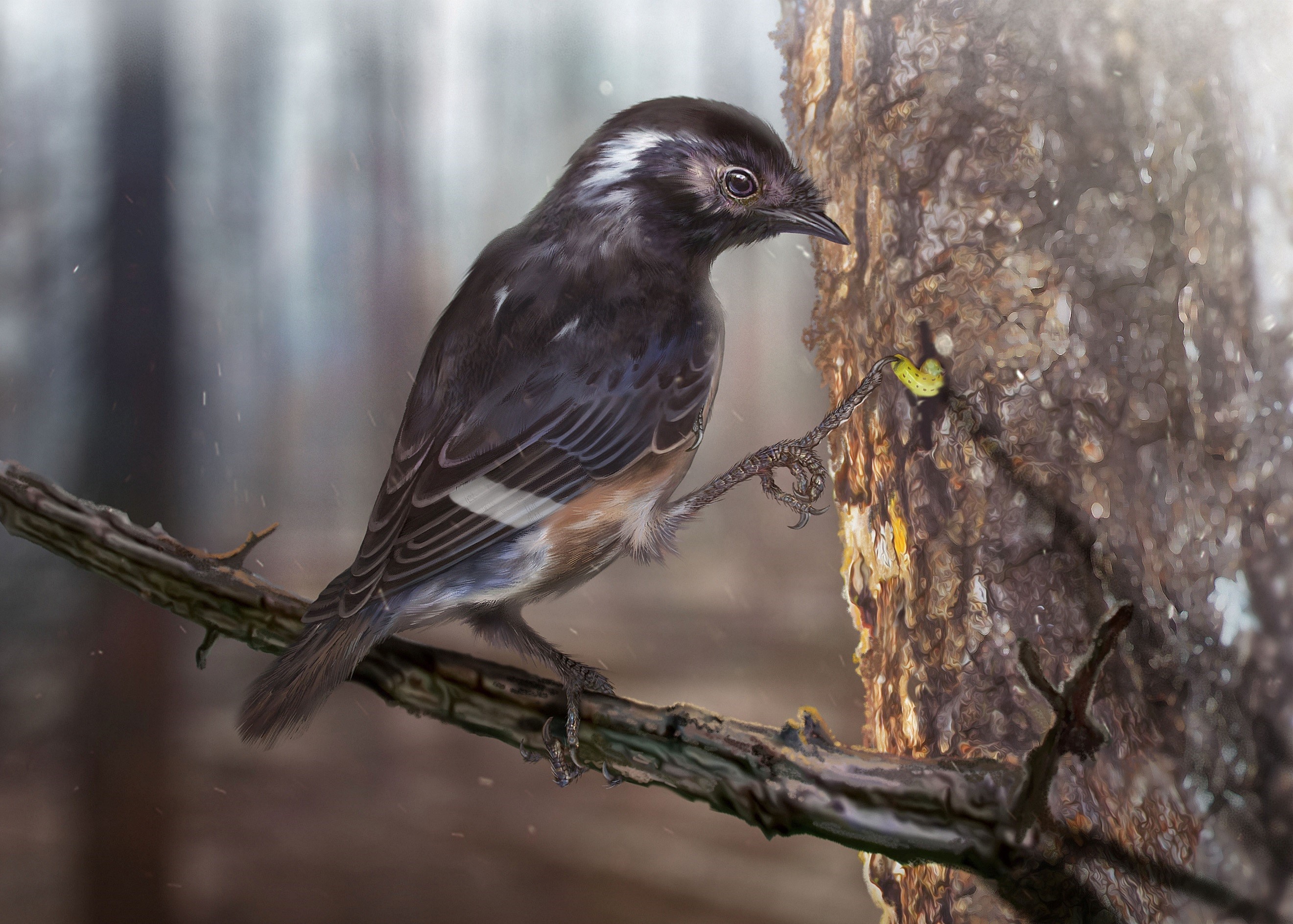Media Release
From: Cell PressBird with unusually long toes found fossilized in amber
Meet the ancient bird that had toes longer than its lower legs. Researchers have discovered a bird foot from 99 million years ago preserved in amber that had a hyper-elongated third toe. The study, published in the journalCurrent Biology on July 11, suggests that this bird might have used its toes to hook food out of tree trucks. This is the first time such a foot structure has been observed in birds, either extinct or living.
"I was very surprised when I saw the amber," says first author Lida Xing at China University of Geosciences (Beijing). "It shows that ancient birds were way more diverse than we thought. They had evolved many different features to adapt to their environments."
To study the Cretaceous period fossil, Xing and his colleagues scanned the amber with micro-CT and created a 3D reconstruction of the foot. They found that the bird's third toe, measuring 9.8 millimeters, is 41 percent longer than its second toe and 20 percent longer than its tarsometatarsus, which is a bone in the lower legs of birds. The team compared the ratios with those of 20 other extinct birds from the same era and 62 living birds. No bird has a foot that resembles this one.
The researchers named it Elektorornis chenguangi. Elektorornis means "amber bird," and it belongs to a group of extinct birds calledEnantiornithes, the most abundant type of bird known from the Mesozoic era. It is thought that Enantiornithines became extinct during the Cretaceous-Paleogene extinction event about 66 million years ago, along with dinosaurs. They have no living descendants.
Based on the fossil, the team estimates that the Elektorornis was smaller than a sparrow, and it was arboreal, meaning it spent most of its time in trees as opposed to on the ground or in water.
"Elongated toes are something you commonly see in arboreal animals because they need to be able to grip these branches and wrap their toes around them," says co-author Jingmai O'Connor at the Chinese Academy of Sciences. "But this extreme difference in toe lengths, as far as we know, has never been seen before."
The amber the foot was found in, measuring 3.5 centimeters long and weighing 5.5 grams, was discovered around 2014 in the HukawngValley of Myanmar. During the Mesozoic era, the valley was full of trees that produced resin, a gooey substance that oozes out of the tree bark. Plants and small animals, such as geckos and spiders, often get trapped in the resin and become fossilized with the amber after millions of years. Scientists have discovered many extinct animals, including the oldest known bee and a feathered dinosaur tail, in amber from this valley.
Xing obtained the amber from a local amber trader, who didn't know what animal this weird foot belonged to.
"Some traders thought it's a lizard foot, because lizards tend to have long toes," Xing says. "Although I've never seen a bird claw that looks like this before, I know it's a bird. Like most birds, this foot has four toes, while lizards have five."
It remains unknown why the amber bird evolved such an unusual feature. The only known animal with disproportionally long digits is the aye-aye. The aye-aye is a lemur that uses its long middle fingers to fish larvae and insects out of tree trunks for food. Therefore, the researchers suggest Elektorornis might have used its toe for the same purpose.
"This is the best guess we have," O'Connor says. "There is no bird with a similar morphology that could be considered a modern analog for this fossil bird. A lot of ancient birds were probably doing completely different things than living birds. This fossil exposes a different ecological niche that these early birds were experimenting as they evolved."
Moving forward, the team hopes to extract the proteins and pigments from some feathers exposed on the surface of the amber. Xing says such data could help them better understand the bird's adaptation to the environment, such as whether it had camouflage plumage.


